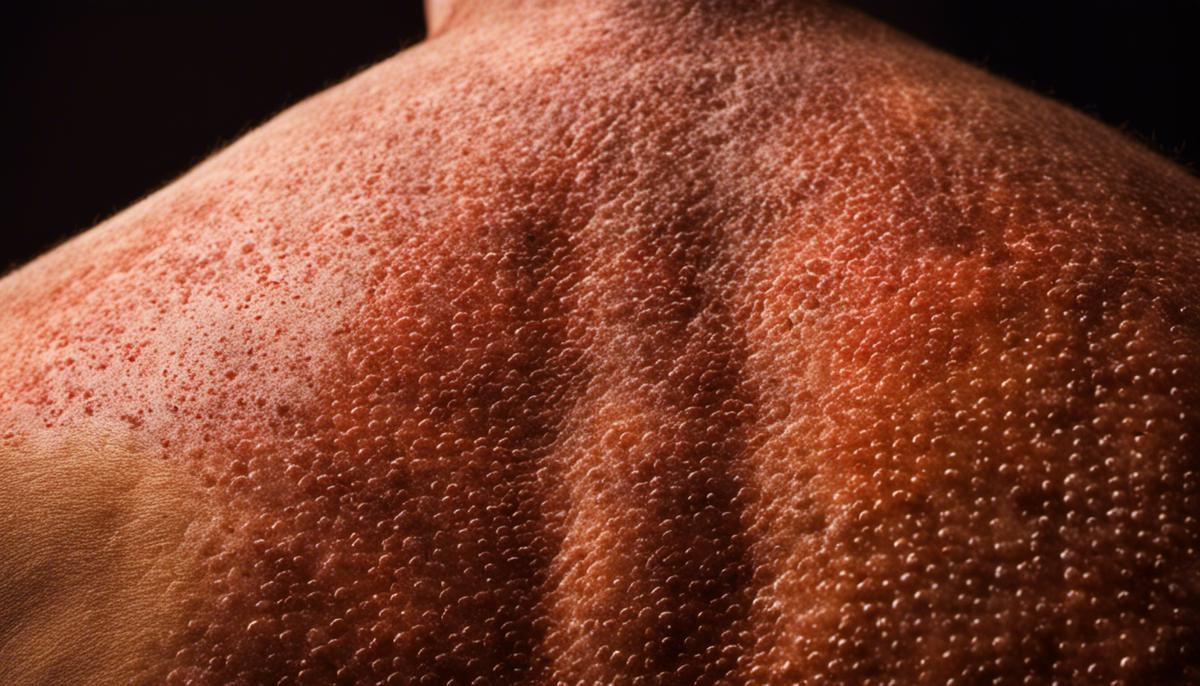Shingles, a painful viral infection, often takes many by surprise when it surfaces later in life. It’s rooted in the varicella-zoster virus, the culprit behind childhood chickenpox, which remains dormant within the body and has the capacity to re-emerge, leading to shingles. But what triggers the reactivation of this latent virus? That’s a vexing question that some scientific studies suggest may be linked to stress and its effects on our immune functioning. The relationship between stress and our overall health is well-known, but its role in activating dormant viruses does necessitate a deeper dive.
Basics of Shingles
Shingles, or Herpes Zoster as it is scientifically termed, is a viral disease that presents itself through a painful skin rash. It is typically characterized by eruptions of blisters on the surface of the skin. Caused by the Varicella Zoster Virus, the same pathogen responsible for chickenpox, it impacts roughly a million Americans annually, but its impact is not equally distributed among the population. Older individuals, particularly those with weakened immune systems, are significantly more susceptible.
The Varicella Zoster Virus exhibits a fascinating characteristic, displaying a dual-phase lifecycle. In the primary phase, the virus gives rise to chickenpox. Once this initial infection subsides, the virus cleverly retreats to a dormant state, hiding within nerve cells, specifically in the cranial nerve ganglia, dorsal root ganglia, and autonomic ganglia. This dormancy period can extend from years to decades, during which time the virus continues to exist within the body, effectively subdued by the immune system.
The secondary phase of the viral life cycle commences when certain conditions in the host trigger the virus to reactivate. These triggers can range from emotional stress, to age-related weakening of the immune system, to health conditions like cancer or HIV/AIDS that compromise immunity. Following reactivation, the virus travels via the nerve fibers to the skin, resulting in the classic outbreak of shingles.
While chickenpox generally presents widely dispersed skin lesions across the body, the shingles rash exhibits a more localized presentation, often affecting just one side of the body. This is a direct result of the virus’s residency in the nerve ganglia, where the reactivated virus travels along the path of individual nerves, causing inflammation and skin eruptions along that designated nerve route. These symptoms typically present as a band of blisters wrapping around either the left or right side of the torso, colloquially referred to as a “belt” or “girdle”.
Shingles’ cardinal symptom, the painful rash, is often preceded by sensations of tingling, numbness, or localized pain. These pre-rash symptoms can precede the visible outbreak by a few days, providing precious time for early diagnosis and treatment. Postherpetic neuralgia, a condition characterized by persistent pain in the affected area even after the rash has healed, is a common complication especially among older patients.
Thus, an understanding of shingles offers us a window into the fascinating world of virology and immunology and their impact on health. While advancements in the form of vaccines and therapeutic antiviral treatments have been made, there is vast potential for further research to aide in the prevention and management of this painful disease. As a parting thought, the Varicella Zoster Virus beautifully demonstrates the intricate and ceaseless duel taking place within our bodies – the struggle between our immune defenses and viral invaders.

Stress and the Human Body
Delving deeper into herpes zoster, often referred to as shingles, it is crucial to explore the notable interdependence between the human immune system and stress factors, which have a significant role in precipitating such ailments. Evidently, these two elements are in an intricate dance that can either contribute to the disease’s prevention or unleash its full-blown effects if not appropriately managed.
First, understanding the role stress plays in the manifestation of shingles requires a fundamental comprehension of the immune system. The human immune system is a complex network of cells, tissues, and organs. While its primary duty is to defend the body against foreign invaders such as bacteria and viruses, it also has the crucial responsibility of maintaining a homeostatic balance within the organism. It must always remain vigilant, ready to spring into action at the first sign of threat, yet at the same time keep its response measured to avoid self-harm. This intricate balance becomes noticeably disrupted under sustained periods of stress.
The study of psycho-neuro-immunology provides insights into this complex interrelationship. When an individual is under stress, the body responds by releasing hormones like hydrocortisone and corticotropin, triggering the “fight-or-flight” response. This response, relevant in life-threatening situations, becomes counterproductive during prolonged stress periods, leading to immune dysregulation. Over time, this dysregulation suppresses the immune system, diminishing its effectiveness against threatening pathogens, such as the Varicella Zoster Virus.
Moreover, chronic stress also impacts inflammation, a critical aspect of the immune response. Inflammatory response under normal circumstances plays a protective role. However, chronic stress makes the body’s inflammatory response improperly excessive or persistently low, both leading to potential health issues. In the context of shingles, an excessive inflammatory response can augment the severity of the rash and blisters, while a low response can further expose the body to the risk of viral reactivation.
However, as critical as the relationship between stress and immune dysregulation may be, it is not the only pathway leading to shingles’ manifestation. The aging process also contributes significantly to a reduction in immune responsiveness, commonly referred to as immunosenescence. This immunological weakening, predisposing older adults to shingles, is further exacerbated by an equal likelihood of an increase in stressful occurrences during later life stages.
Furthermore, it is essential to consider the bidirectional relationship between the Varicella Zoster Virus and the immune response. The virus, innovative in its survival tactics, can use stress-induced immune dysregulation to its advantage, remaining dormant in the body and reactivating when immune defenses are low.
While the identification of stress as a contributing factor for shingles provides an essential lens to further investigate its management and prevention, it also raises many more questions. Future research needs to explore not just the correlation, but specific stress-related mechanisms contributing to immune dysregulation, as these findings are potentially invaluable to improving healthcare outcomes. Innovation in the scientific study of the relationship between stress and immunity, coupled with advancements in developing antiviral treatments, paints an encouraging picture of the possibility of wellness within stress-laden modern societies.

Link between Stress and Shingles
The Correlation Between Stress and Shingles
Perched on the precipice of connecting the realms of psychology and immunology lies the concept of stress, an inescapable part and parcel of human existence. Subjecting the human body to heightened levels of psychological stress is bound to wreak havoc in a multitude of ways. In this context, it is pertinent to examine the correlation between stress and the incidence of shingles, otherwise known as herpes zoster.
Dwelling within the realm of the immune system, recent interdisciplinary research in the field of Psychoneuroimmunology has been gradually unmasking the intricate connections between the mind, neural pathways, and immune response. A plethora of empirical studies related to psychopathologies, including stress-related disorders, have shed light on the prodigious potential of stress to disrupt the fragile equilibrium of the immune system.
In an optimal state, our immune system functions as the frontline defense against intruding pathogens. However, under the influence of chronic stress, this dynamic biological system may falter in maintaining homeostasis, leading to dysregulation. This immune dysregulation, often characterized by the undue activation of pro-inflammatory pathways, can transform the otherwise dormant Varicella Zoster Virus into an active infectious agent, thereby manifesting as herpes zoster in affected individuals.
Chronic stress has been implicated in exacerbating inflammation, thereby providing supportive evidence of its significant role in precipitating the severity of shingles. It has been postulated that elevated inflammatory responses, in turn, worsen the intensity and duration of the shingles rash and the associated pain.
Another piece of the puzzle reveals the hand that age plays in the interplay between stress and immune response. The phenomenon of immunosenescence, or declining immune function with age, coupled with chronic stress, increases the vulnerability of older populations to shingles.
The virus itself interacts with the host in a bidirectional manner. It not only provokes an immune response but also manipulates the immune system to establish latency and ultimately, reactivation. This intricate dance between a latent virus and the immune system, torqued by the added stress factor, results in the manifestation of shingles.
This exploration into the complex relationship between stress and the immune system invariably raises pertinent questions that beckon further research. Understanding the mechanism through which stress contributes to immune dysregulation is essential, not only in comprehending the pathogenesis of shingles but also in developing effective therapeutic interventions. This inevitably gives rise to the possibility of managing and preventing shingles through a dual approach, addressing both the stress element and strengthening immune responses through advances in antiviral medications.
Nonetheless, it is wise not to consider these findings as definitive statements, but rather as stepping stones within the vast labyrinth of microbiology and immunology. As science progresses, it is apparent that detailing the contributions of stress in eliciting the reactivation of Varicella Zoster Virus offers valuable insight into the world of psychoneuroimmunology and beyond.

Managing Stress to Prevent Shingles
Turning our attention now to the active role of stress and its management in shingles, it becomes apparent that reducing stress can serve as a vital strategy in minimizing shingles risk and severity. The realm of stress management, while familiar to many, takes on a unique significance when viewed through the lens of immunology.
In the realm of stress management, it’s pivotal to acknowledge the weight and interplay of behavioral, psychological, and social aspects. In light of these, health psychologists have propounded many effective stress management techniques.
From a cognitive viewpoint, an individual’s perception of stressors has a significant impact on their physiological response. Cognitive behavioral therapy, a widely recognized and effective technique, aids individuals in recognizing and shifting negative thought patterns that may exacerbate stress levels.
In relation to serotonin’s role in mood regulation and its impact on the immune function, behavioral strategies such as regular physical exercise may yield significant immunological benefits. Studies have highlighted exercise’s positive effect on reducing levels of inflammatory markers, and increasing levels of anti-inflammatory compounds, indicating its potential as a beneficial intervention against shingles.
Another burgeoning interest in the field is the practice of mindfulness. By focusing one’s consciousness on the present, mindfulness contributes to stress reduction by curbing rumination and encouraging emotional regulation. Furthermore, research suggests that mindfulness practices may increase immune function and resilience to disease.
Drawing from the field of psychosocial interventions are methods such as social support and stress management training. Social support, be it emotional or informational, serves as a buffer against the physiological effects of stress, acting as a potential protective factor in the manifestation of shingles.
Further research has elucidated the role of nutrition in managing stress. A healthy diet, rich in micronutrients, is vital for the optimal functioning of the immune system. Certain foods, specifically those high in antioxidants, such as blueberries, tea, and dark chocolate, have been found to lower blood pressure and cortisol levels, mitigating the effects of stress on the body.
Similarly important is the role of adequate sleep in strengthening one’s immunity. Lack of proper rest elevates cortisol levels, thereby accelerating the body’s inflammatory response, a precursor to shingles outbreaks.
Last but not least, scientific understanding of the virus itself can contribute to disease management. Vaccination against shingles protects against the virus by increasing the ‘memory’ T cells, strengthening the immune response to the Varicella-zoster virus.
As our understanding of stress, immunity, and the etiology of shingles continues to evolve, a multi-faceted approach towards shingles management emerges. This approach, encompassing prevention—by way of vaccination, and management—through psychosocial, behavioral, and nutritional strategies, holds promise in our ongoing battle against this persistent invader.
The intricate connection between the immune system and stress remains a subject of much curiosity, necessitating a rejuvenated focus on holistic health practices. Indeed, it stimulates an interesting dialogue that has yet to exhaust all avenues of exploration. Each layer of understanding unraveled only beckons more research—invoking enthusiasm and vigilance in equal measure. It is a riveting testimony to the dynamic world of virology and immunology—a world where one’s resilience and curiosity are the finest antidotes to the veiled mysteries of our body’s microscopic invaders.

Our ability to manage stress effectively can significantly influence our health outcomes, including the likelihood of conditions such as shingles surfacing. Incorporating relaxation techniques, making lifestyle modifications and exploring potential medical interventions can contribute to overall stress reduction. The scientific evidence, while not definitive, does suggest that lower stress levels may curb the activation of the varicella-zoster virus. As we continue to understand more about stress and its link to various health issues, it becomes increasingly clear that pursuing healthier, less stressful lives could reap significant benefits when it comes to conditions like shingles

Matt Smith is a seasoned journalist and author whose expertise spans across the dynamic realms of Politics, Gadgets, Gaming, and a plethora of general interest topics. With a Master’s in Political science and tech pedigree shaped in Silicon Valley, Matt brings a wealth of knowledge and a critical eye to everything he writes.
Politics: Matt offers sharp political commentary, drawing from his experience as a political analyst and his academic rigor.
Gadgets: His tech insights are grounded in real-world experience, having been on the front lines of innovation with a degree from Caltech.
Gaming: A respected voice in gaming, Matt’s reviews and trend analyses are a testament to his deep involvement in the gaming community.
General Topics: From science to culture, Matt’s writing spans a broad spectrum, engaging readers with a blend of expertise and relatable prose.
Engage with Matt’s compelling content for a fresh perspective on the issues at the forefront of today’s discourse.

